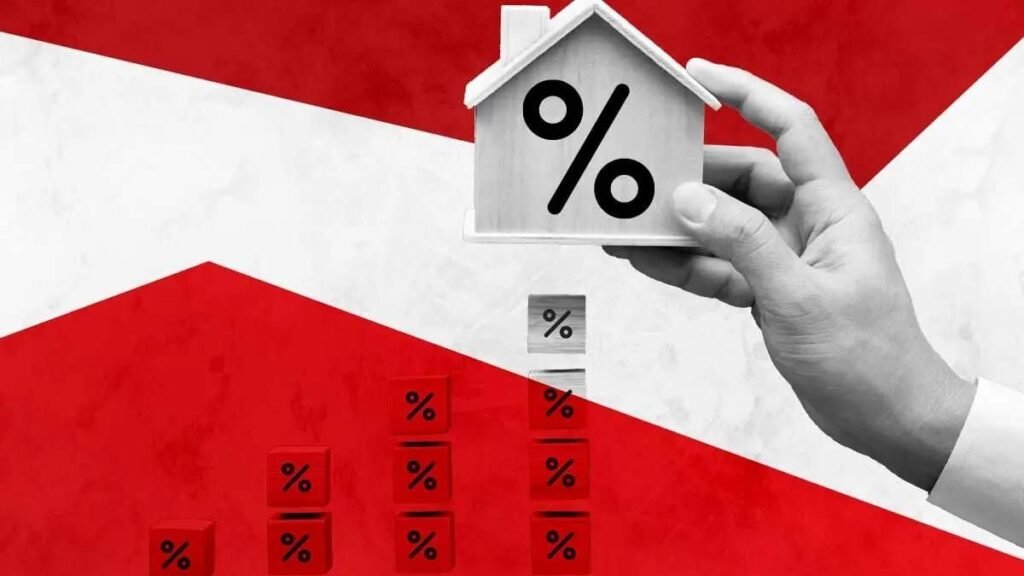With the recent announcement by NatWest launching its new fixed-rate mortgage deal at 3.89%, the competitive atmosphere among UK lenders is heating up. This follows the Bank of England’s decision to lower the base interest rate to 5%, and lenders are responding enthusiastically by offering attractive mortgage deals to consumers.
Across the board, banks like Santander have joined the fray by reducing their mortgage rates as well. This hobby of lowering rates might set the stage for what many are calling the ‘mortgage rate wars’ as lenders vie for market share.
Previously, mortgage deals below 4% were hard to come by, with most offers requiring hefty deposits upwards of 40%. But favorable conditions are inspiring optimism for first-time homebuyers who previously struggled to enter the market.
The introduction of fixed-rate mortgages at lower thresholds is expected to stimulate purchasing activity. NatWest’s five-year fixed mortgage option, though accompanied by a £1,495 fee, offers couples hoping to buy their first home new possibilities.
There’s also talk of two-year fixed mortgages now starting at 4.05%, coming at a cost of £3,499. Such competitive rates are welcomed by industry specialists and homeowners alike; they signal relief after a prolonged period of high borrowing costs.
Tony Castle, Managing Director at PFG Mortgages, expressed his excitement about the new rates saying, “The good news just keeps coming on the mortgage front,”. His optimism reflects the broader sentiments of the market, where affordable loans could revitalize home buying.
Mortgage brokers point out the importance of the Bank of England’s inflation results, stating they will play a significant role in influencing future rate adjustments. With expectations of falling inflation, many anticipate the central bank will continue on this rate-lowering trend.
Speculation surrounding upcoming inflation data has become increasingly significant as lenders adjust their strategies. Consumers are hopeful as several lenders are aiming to cut their rates even more, capturing the market for home loans.
Speaking about market dynamics, Katy Eatenton from Lifetime Wealth Management notes, “Is there a better way to start the week?” The enthusiasm for lower rates is palpable, and experts believe this trend may only gain momentum as more lenders jump on board.
Indeed, the UK property market has seen positive momentum with indicators such as faster home price growth. Nationwide reported house prices rose 0.3% last month, signaling higher interest from buyers and positive psychological shifts.
Across the country, homebuyers are benefiting from competition among lenders, leading to better overall access to mortgages. For many, the prospect of reduced borrowing costs could finally ease the challenges of homeownership.
Reports indicate the average property price now sits at approximately £266,334 after July’s minor market fluctuations. This has raised questions about affordability, especially for first-time buyers who often find the market out of reach.
House price increases over the year have resulted in monthly mortgage payments consuming around 37% of average take-home pay, marking a significant increase compared to pre-COVID averages. Economists predict solutions will require not just lower rates, but also consistent income growth.
According to Robert Gardner, Nationwide’s chief economist, “Prices are still around 2.8% below the all-time highs recorded”. Gardner believes this could result from several factors, including potential recovery within the labor market.
The broader economic situation remains cautious with inflation and cost-of-living pressures continuing to constrain household budgets. Despite these challenges, optimism surrounds the prospect of increased market activity as rates decline.
Other lenders are showing continued resolve, with Halifax and Nationwide hinting at similar moves. Their latest price adjustments underline how the push for lower rates is creating tangible opportunities for homeownership.
The swapping of mortgage offerings among banks is likely to escalate, bringing better deals to all consumers. Each minor shift offers hope to not only current homeowners but also those eagerly awaiting their entry to the property ladder.
Experts suggest the uptick in property sales could become even more pronounced come fall. The return of borrowers from summer holidays could inject additional zest to the housing market.
With clearer signs of easing rates compounding interest from consumers, experts express confidence. Companies like Coreco and others are closely monitoring the competitive atmosphere for borrowing.
The market turmoil earlier this year around lending rates may soon be behind us. Positive indicators suggest lenders are eager to capitalize on recovering market sentiment.
While there’s still work to be done with household budgets and overall consumer confidence, many are optimistic about the direction indicated by falling rates. With better loan offerings, aspirational homebuyers are taking renewed interest.
Indicators point to economic balances shifting, favoring buyer activity relative to previous months. Should the Bank of England continue on its path of rate adjustments, broader economic stability is encouraged.
A fresh wave of mortgage popularity is emerging as consumers see the tangible benefits of lower borrowing costs. With all eyes on financial developments, the property sector is hopeful for sustained growth and activity.
With so many dynamics at play, experts invite borrowers to stay on alert for emerging opportunities. The drop below 4% signifies not just competitive banks but reflects societal shifts back toward making homes more attainable.
Looking to the future, it’s clear the combination of lower rates and active lenders will be pivotal. The urgency and excitement surrounding the ‘mortgage rate wars’ highlight the competitive atmosphere within the banking sector, aiming to attract homebuyers.

